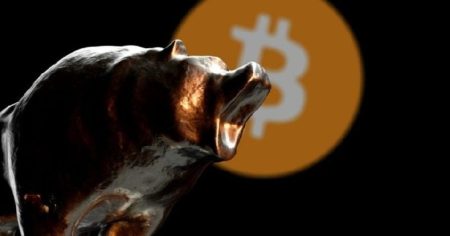Jito Foundation Implements Strategic Economic Updates and Completes Inaugural $1M Token Buyback
Foundation Charts New Course for JTO Token Economy with Significant Governance Changes
In a series of decisive moves aimed at strengthening its economic infrastructure, the Jito Foundation has announced four major updates to the JTO token economy while simultaneously completing its first $1 million JTO token buyback. These developments represent a pivotal evolution for the Solana-based protocol as it works to enhance value accrual mechanisms and solidify the token’s position within the broader digital asset ecosystem.
The $1 million buyback initiative, a significant milestone for the Foundation, was methodically executed through four distinct phases spanning a ten-day period. According to the official announcement, this carefully orchestrated approach using Time-Weighted Average Price (TWAP) strategies will continue in the immediate future. However, the Foundation has already set its sights on more sophisticated mechanisms, revealing plans to develop auction-based systems designed to enable automatic value accumulation. This forward-looking approach demonstrates the organization’s commitment to implementing sustainable economic models that benefit the broader Jito ecosystem and its stakeholders.
JIP-24 Proposal Adoption Doubles DAO Fee Structure
Perhaps the most consequential of the announced changes is the successful adoption of the JIP-24 governance proposal, which introduces a substantial modification to the protocol’s fee structure. The proposal effectively doubles the Decentralized Autonomous Organization’s (DAO) fee from the Jito Block Engine, increasing it from 3% to 6%. Proponents of the measure argued that this adjustment would create a significant boost to revenue streams flowing directly into the DAO’s treasury, ultimately strengthening the fundamental value proposition of the JTO token.
This fee restructuring represents a deliberate strategy to align protocol value with token holder interests, addressing a common challenge in decentralized finance where protocol success doesn’t always translate to token appreciation. By directing a larger percentage of revenue to the DAO treasury, the Foundation is creating more robust economic linkages between protocol usage and token value, potentially setting a precedent for other projects facing similar tokenomics challenges.
Enhanced Transparency and Community Engagement Initiatives
In conjunction with these economic updates, the Jito Foundation has launched the JTO Economic Hub page, a dedicated resource designed to provide unprecedented transparency into token metrics, revenue flows, and economic data relevant to stakeholders. This information portal aims to democratize access to critical financial insights, enabling token holders and community members to make more informed decisions while fostering a deeper understanding of the protocol’s economic mechanics.
Further demonstrating its commitment to community engagement, the Foundation has announced its inaugural JTO token holder conference, scheduled for September 24th. This virtual summit will bring together developers, investors, and community members to discuss the protocol’s roadmap, economic model, and governance framework. By creating dedicated forums for substantive discussion, the Foundation is working to strengthen the bonds between the technical development team and the broader community of token holders who have a vested interest in the protocol’s long-term success.
Strategic Alignment Between Protocol Value and Token Economics
According to representatives from the Jito Foundation, these coordinated initiatives reflect a deliberate strategy to increase compatibility between the protocol’s operational success and JTO token performance. This alignment represents a response to emerging best practices in decentralized finance, where successful projects increasingly recognize the importance of creating tangible economic connections between protocol utilization and token value accrual mechanisms.
The foundation emphasized that these changes aim to strengthen the economic sustainability of the ecosystem while creating more direct pathways for protocol value to be reflected in token performance. By implementing these structural improvements to the token economy, Jito is positioning itself at the forefront of projects working to solve the challenge of sustainable value accrual in decentralized systems—a problem that has plagued many blockchain projects despite operational success.
Future Outlook and Market Implications
While the Foundation explicitly noted that its announcements should not be construed as investment advice, market observers are closely watching how these economic adjustments may influence JTO token dynamics in both the short and long term. The structured buyback program has already created a new demand vector for the token, while the increased DAO fee percentage establishes a more robust foundation for ongoing value accrual.
The combination of enhanced transparency through the Economic Hub, direct community engagement via the upcoming token holder conference, and structural improvements to revenue flows suggests a comprehensive approach to ecosystem development. As the Jito Foundation continues to refine its economic model, these changes may serve as a valuable case study for other decentralized protocols seeking to balance operational growth with sustainable tokenomics. The market’s response to these initiatives will likely provide important insights into how effectively structural governance changes can influence token performance in decentralized systems built on the Solana blockchain.
As the cryptocurrency sector continues to mature, initiatives like those undertaken by the Jito Foundation highlight the increasing sophistication of economic designs within decentralized ecosystems. By implementing transparent, community-focused mechanisms for value accrual, the Foundation is establishing a framework that could potentially serve as a template for sustainable token economics across the broader digital asset landscape.















